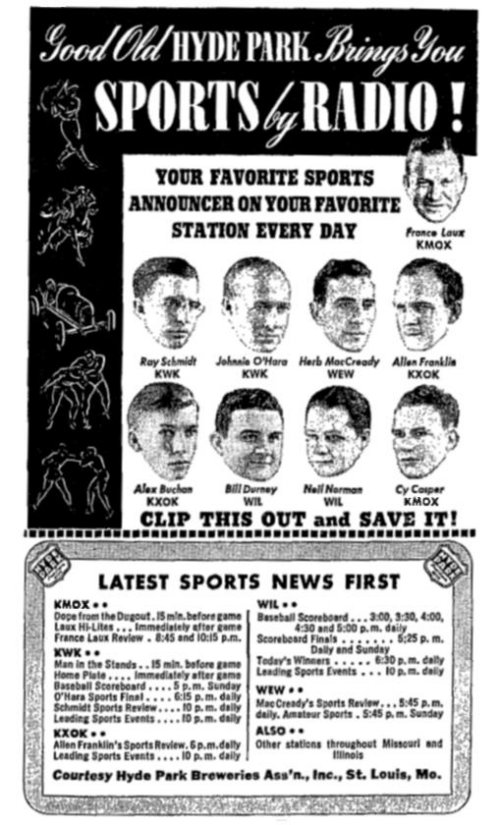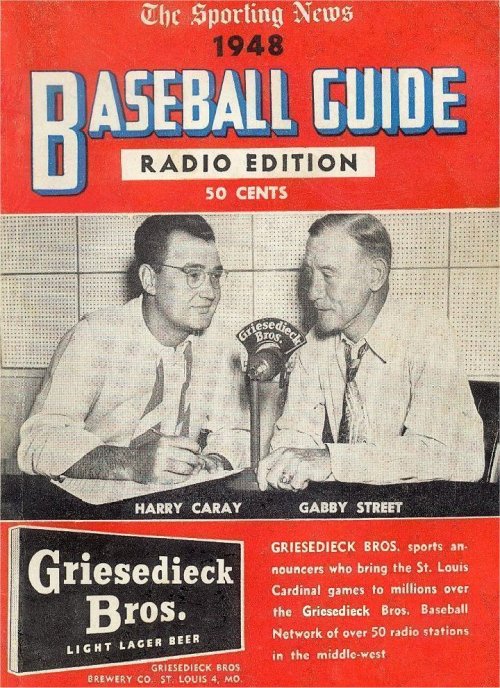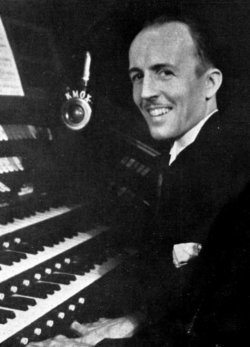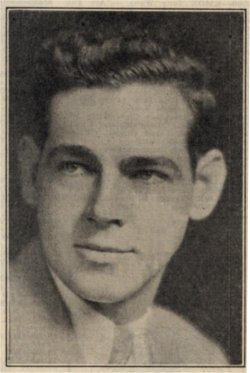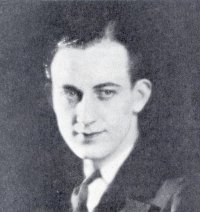Radio Articles
Marvin E. Mueller Told Radio Men They Didn’t Know Their Business And Now Shows ‘Em
By Meryl Friedel
Dramatic actor par excellence, ace announcer, writer, production man, singer, player of both the piano and alto horn…and only 19 years old…that’s Marvin Elliot Mueller, Dramatic Director of KMOX, and without doubt, the most talented young man of his age in the radio business. For that matter, he is more talented than ninety nine percent of the thousands who daily pass over the stages of many air theaters in this country.
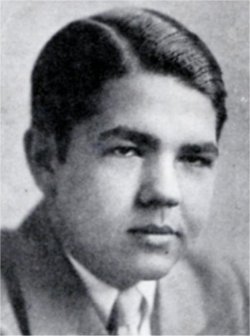
Like the true story of all genii…Marvin is certainly a genius…his story is one of determination to make good, and long hours of hard work to do it.
His entrance into radio while a freshman at Washington University was no accident, as was the beginning of many radio stars. Marvin had always been interested in radio. One day he decided that, because certain announcers on local stations didn’t know how to properly pronounce the names of foreign musical works, it was his duty and pleasure to become a radio announcer and to see to it that listeners received the correct pronunciations.
With the courage…it is sometimes called foolhardiness…of youth, he suited action to the thought and immediately called upon a local station, telling them what he thought of their local announcers and suggesting he be given an audition. Marvin says that, considering his nerve, they were exceptionally nice, for they gave him an audition.
He admits now that he must have been pretty bad, but at the time he was annoyed that he wasn’t immediately signed, and he told the production man in charge of his audition that if they didn’t want him for an announcer, they should engage him for dramatic work because he could do many different types of voices. (He wasn’t sure he could, but he had once done it during a high school show.)
To make the story short, that “clicked” and he was engaged to write and enact a daily dramatic program in which, at times, he took as many as forty different parts.
From then on, it was comparatively easy. Although he was in and out of radio up to August, 1932, he felt confident that if he got the chance, he’d make good.
It was last August that he finally felt sure enough of himself to try for an audition at KMOX, which had always been his goal. Soon after his audition, he was made a member of the staff. Since then, he has steadily forged ahead, improving upon his talents and becoming one of the most popular of the KMOX voices.
In the less than a year’s time that Marvin has been with this station, he has impersonated a number of famous people of all types, including the late Calvin Coolidge, President Roosevelt, Abraham Lincoln, George Washington, Joseph of Nazareth, Samuel Insull, Japanese Minister of War, George Bungle, Uncle Remus and many others.
His repertoire of dialect types include British, French, Italian, Negro, Rural, Mountaineer, Irish, Cockney, Tough, Chinese, German, Old Man, Juvenile and Child.
Despite his unusual talents and the fame he has won because of them, Marvin is a normal young man who enjoys dancing, driving, and all the other sports of active, young people. His cheerful disposition and willingness to pitch in any place where help is needed makes him a favorite with the KMOX staff. And probably the most unusual thing about this young St. Louisan is that he has no idea how exceptionally talented he is. Others do, however, and we predict that it won’t be long after he finishes the University next year that the entire radio world will be hearing much of this young man.
Oh yes…we almost forgot to tell you what he looks like. Perhaps because his personality is so engaging one forgets his appearance, although it is a very attractive one. Marvin is 5 feet 11 inches tall, weighs around 175 pounds, has very dark brown hair and eyes, and one of those rosy complexions that women always envy in men.
(Originally published in Radio and Entertainment 7/22/33)
